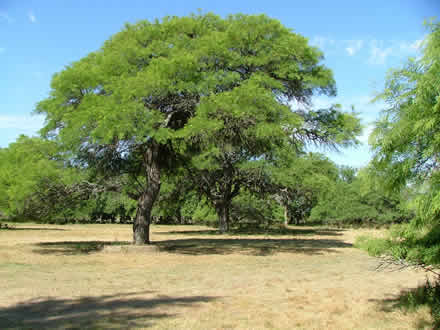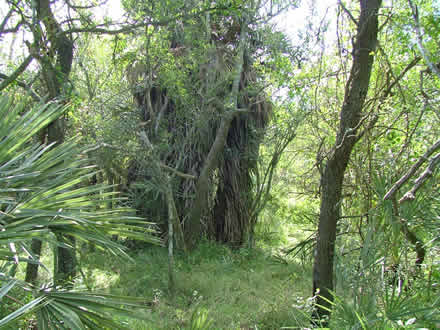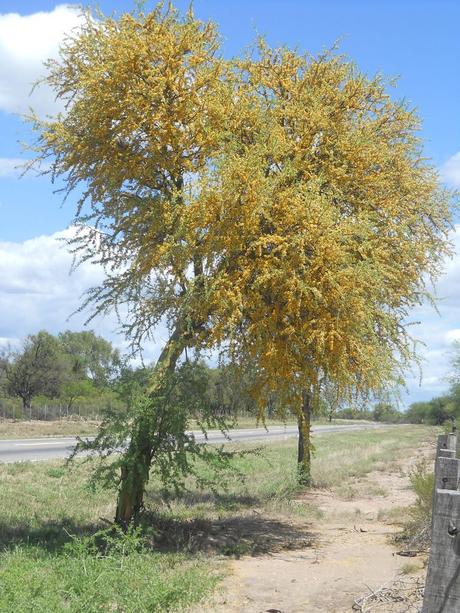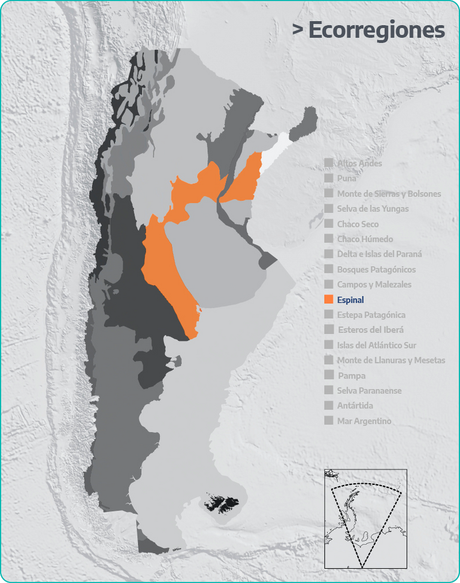
Whoever has followed my posts may have noticed my passion for green spaces, forests, hills and jungles in general there was a place I had wanted to visit for a long time since I returned to Argentina: the ecosystem called El Espinal (for the thorns exactly) that extends through the provinces of central Argentina, especially Santa Fe. But in reality it covers a much more complete area, stretching from Corrientes and Entre Rios - part of the so-called Mesopotamia or Argentine coast - through Santa Fe, westwards into the province of Córdoba and, surrounding the Pampas steppe, into the Atlantic Ocean in the south of the province of Buenos Aires.
The story and pictures illustrating this post are from the central part of the province of Santa Fe.
Actually an ecoregion with very particular characteristics that I was able to visit before this tremendous pandemic called Coronavirus.

It is an ecosystem formed by all the plants with thorns you can imagine. Therefore, clothing must be protective and, for temperature reasons, to avoid excessive value dressed in heavy garments, it is advisable to visit it in autumn or early spring. Boots are almost a must. Or, otherwise, a robust trekking shoe.
Among the trees of certain size, the ñandubay, the carob tree, the tala and the caldén among others predominate.
The forests alternate with grasslands, savannahs and aquatic environments. The main rivers that cross this vast region are the Saldo, the Saladillo Dulce, the Saladillo Amargo and numerous lagoons.
The crops are varied: corn, wheat, sunflower with an intense livestock exploitation.

The birds take advantage of the leaves, flowers, seeds and fruits of the plants to feed themselves and also to locate their nests or as a refuge.
Many animals live in these environments, including numerous reptiles, mammals, amphibians and fish.
The environment of the Espinal is very varied, but also very modified by man. This is why it must be preserved to prevent it from disappearing.

Quien ha seguido mis posts puede haberse percatado de mi pasión por los espacios verdes, bosques, montes y selvas en general habia un lugar que deseaba visitar desde hacía mucho tiempo desde que regresé a Argentina: el ecosistema llamado El Espinal (por las espinas exactamente) que se extiende por las provincias del centro de Argentina, especialmente Santa Fe. Pero que, en realidad abarca un áarea mucho más completa que va desde Corrientes y Entre Rios -parte de la llamada mesopotamia o litoral argentino- por este pasa por Santa Fe, hacia el oeste penetra en la provincia de Córdoba y, rodeando la estepa pampeana, llerga al Océano Atlántico en el sur de la provincia de Buenos Aires.
El relato y fotos que ilustran este post son de la parte central de la provincia de Santa Fe.
En realidad una ecoregión con características muy particulares que pude visitar antes de que se desatara esta tremenda pandemia llamada Coronavirus.

Es un ecosistema formado por todas las plantas con espinas que se puedan imaginar. Por lo tanto la vestimenta debe ser protectora y, por razones de temperatura, para evitar el excesivo valor vestido con indumentos pesados, es aconsejable visitarlo en otoño o inicios de primavera. Las botas con casi una obligación. O, caso contrario, un robusto calzado de trekking.
Entre los árboles de cierta envergadura predominan el ñandubay, el algarrobo, el tala y el caldén entre otros.
Los bosques alternan con pastizales, sabas y ambientes acuáticos. Los principales rios que atraviesan esta vasta region son el Saldo, el Saladillo Dulce, el Saladillo Amargo y numerosas lagunas.
Los cultivos son variados: maíz, trigo, girasol con una intensa explotación ganadera.

Las aves aprovechan las hojas, flores, semillas y frutos de las plantas para alimentarse y también para ubicar sus nidos o como refugio.
Son muchos los animales que conviven en estos ambientes, entre ellos numerosos reptiles, mamíferos, anfibios, peces.
El ambiente del Espinal es muy variado, pero también muy modificado por el hombre. Razón por la cual debe ser conservado para evitar que desaparezca.

- Fuente de las imagenes / Sources images: El Espinal.

